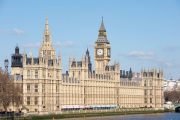
The government of Norway announced on Monday that it is banning the serving of alcohol in bars and restaurants as part of the nation’s effort to slow the spread of the so-called Omicron Variant of the Chinese coronavirus.
Other measures include tightening coronavirus restrictions in schools, mask mandates, the of closing gyms and swimming pools to most citizens, and an increased push to have citizens vaccinated with the experimental coronavirus booster shots.
Quarantines will also become more prevalent and widespread in the nation, the government announced.
In order to speed up the booster-shot process, the government has indicated that the armed forces of Norway could be mobilized to assist. Pharmacies will also be used to speed up the inoculation process.
It’s the fourth round of new coronavirus measures announced in the past two weeks as government officials appear to be panicking about the new Omicron Variant.
Prime Minister Jonas Gahr Stoere announced the new measures in a press conference on Monday.
“There is no doubt — the new variant changes the rules. That’s why we need to act fast and we need to act again,” Stoere said. “For many this will feel like a lockdown, if not of society then of their lives and of their livelihoods.”
“It is a heavy burden that we are announcing now, for many people and many companies,” Stoere said.
Without the new measures, the Norwegian Institute of Public Health (FHI) predicts that within three weeks there could be 90,000 to 300,000 new COVID-19 infections “per day” in the nation of 5.4 million people. FHI predicted that 50 to 200 cases per day might require hospitalization, putting a severe strain on the nation’s healthcare system.
“A lack of action now could lead to large negative consequences for society, not just for health services and municipalities,” the FHI added.
The FHI reports that the nation is already experiencing a strain on the healthcare system owing to the new Omicron Variant.
“The omicron variant will already in December cause a wave with many sick, many hospitalisations, [putting a] significant burden on the health care system and society through, among other things, widespread sickness absence,” the FHI stated.
Since October, Norway has experienced a steady increase of new coronavirus cases. In October, the FHI was reporting 500 new cases per day. By December 6, it was up to 6,000 cases per day, although by December 12 it had dipped to 4,000 per day. Currently, approximately 30 new cases are admitted to hospitals each day according to the FHI.
The new COVID-19 “crisis” is affecting the nation’s currency as well. DNB Markets reports that the new COVID-19 measures might put a hold on the central bank’s plans to raise interest rates this week. The nation’s currency, the krone, has weakened by 0.9 percent since the new measures were announced.
Assuming they are not typos, the Norwegian government’s estimates of potential new COVID-19 infections (which appear on both the English and Norwegian versions of the site) seem absurd. At 90,000 cases per day, the nation would only last two months before every single Norwegian was infected. At 300,000 cases per day, the entire nation would be infected in less than 20 days. Giving such extreme infection estimates will allow the Norwegian government to claim that their authoritarian intervention saved millions of citizens from infection, which is a farce.
Norway has administered more than 9.1 million doses of the experimental vaccines to date — enough to fully vaccinate a 85 percent of the population. What, exactly, are these vaccinations doing? Because if Norway’s FHI is to be believed, then what’s happening in the Nordic nation is a pandemic of the vaccinated, not the unvaccinated.
The ban on serving alcohol is expected to last at least four weeks, likely putting a severe dent in the plans of many Norwegians’ Christmas and New Year celebrations.
The Grinch who stole Christmas is alive and well and living in Norway.






